Abstract
The physiological nature of photoinduced germination of Onoclea sensibilis L. spores was investigated by temporarily applying a range of temperatures, particularly 40 C, before and after short light treatment. Controls were germinated at 25 C.
The preinduction phase, during which photosensitivity is maximally developed in the dark, is sensitive to temperature. Treatment at 40 C for 8 or more hours reduces the developed photosensitivity to a minimal level, but the inhibition by 40 C treatment is reversed slowly after subsequent incubation at 25 C in the dark. The postinduction phase, in which dark processes lead to stain uptake and eventually to visible protrusion, is also sensitive to temperature. Inhibition by 40 C occurs shortly after photoinduction, but disappears 6 or more hours after irradiation. Postinduction spores whose germination is inhibited by 40 C treatment recover the ability to germinate after subsequent incubation at 25 C plus a second light treatment. The inhibition and recovery take place faster in postinduction spores than in preinduction spores. In addition, escape from 40 C inhibition is found in the postinduction phase but not in the preinduction phase. Temperatures lower than 25 C exert slow inhibition of both pre- and postinduction processes, and 30 to 35 C act to stimulate germination.
In comparison with our earlier work with anaerobiosis and cycloheximide, the postinduction step inhibited by 40 C can be located shortly after the step inhibited by anaerobiosis but before the cycloheximide sensitive step.
Full text
PDF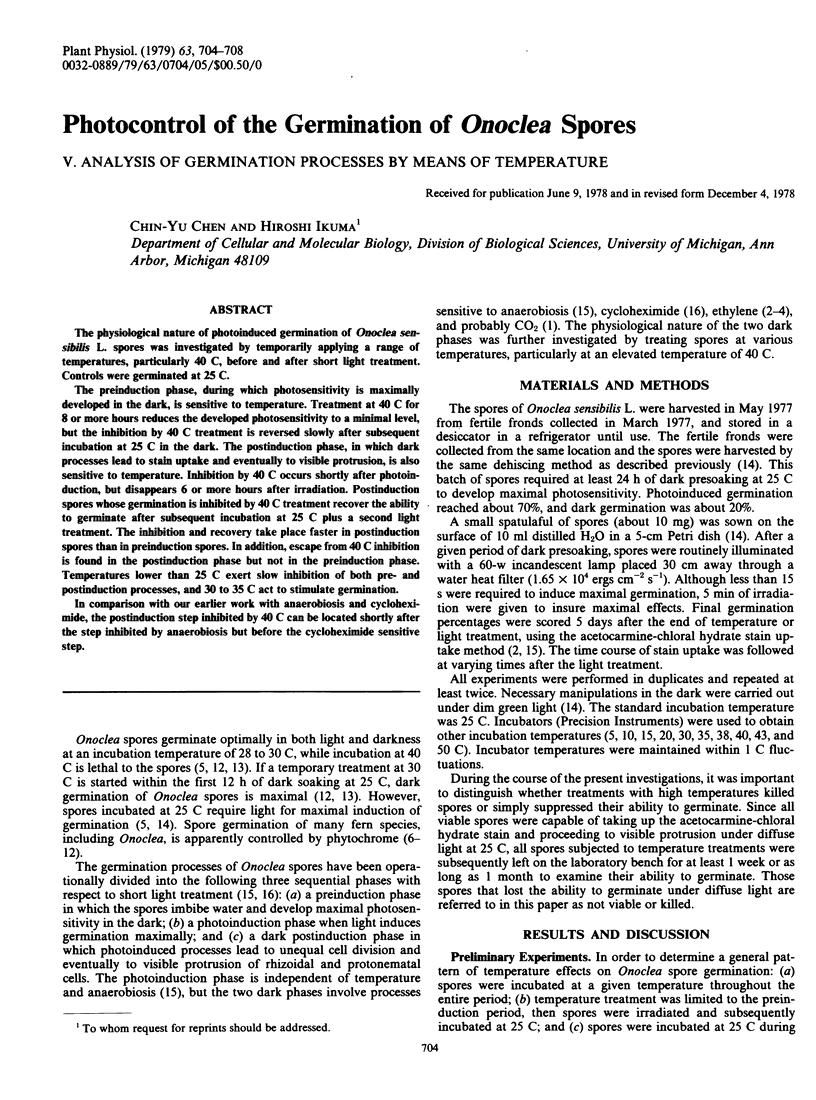
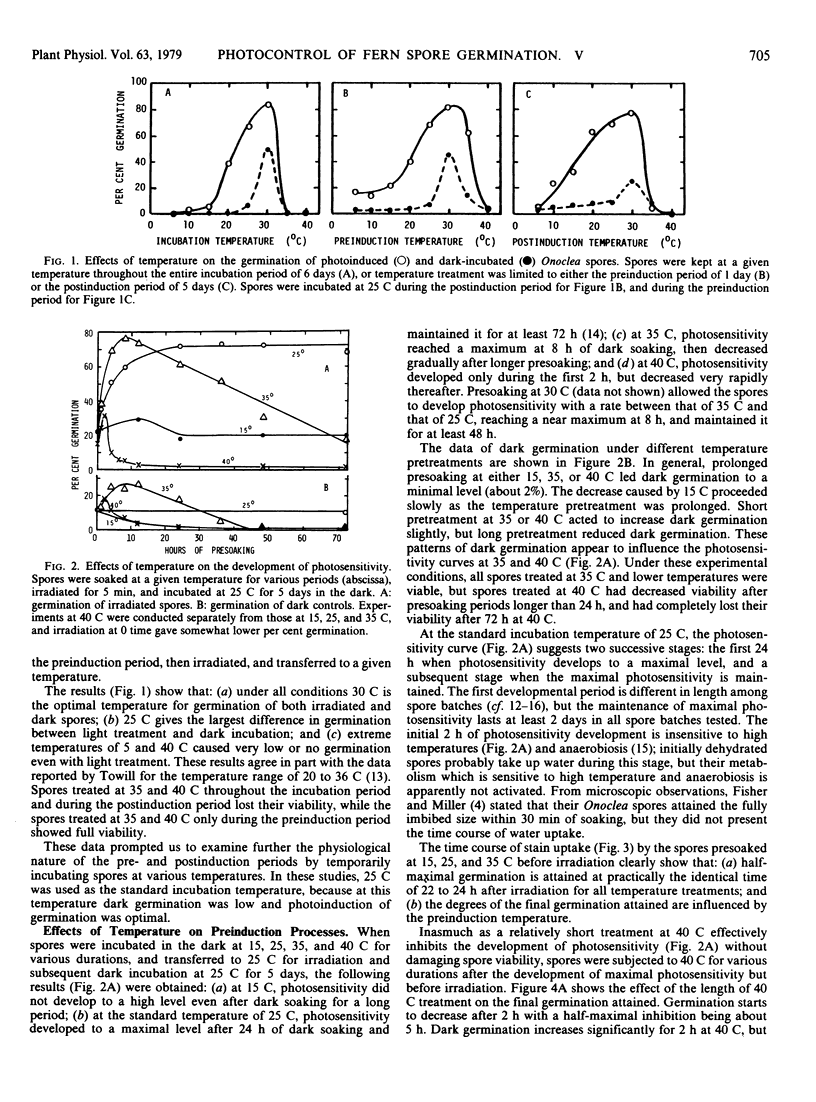
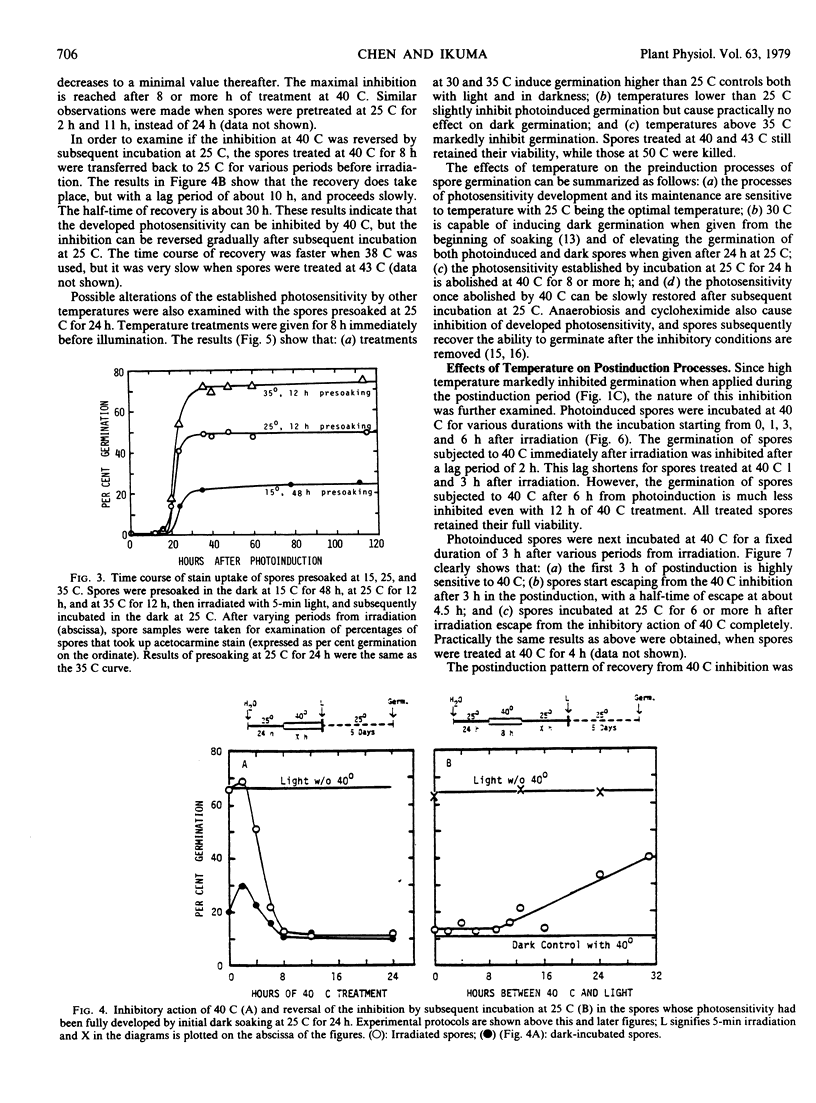
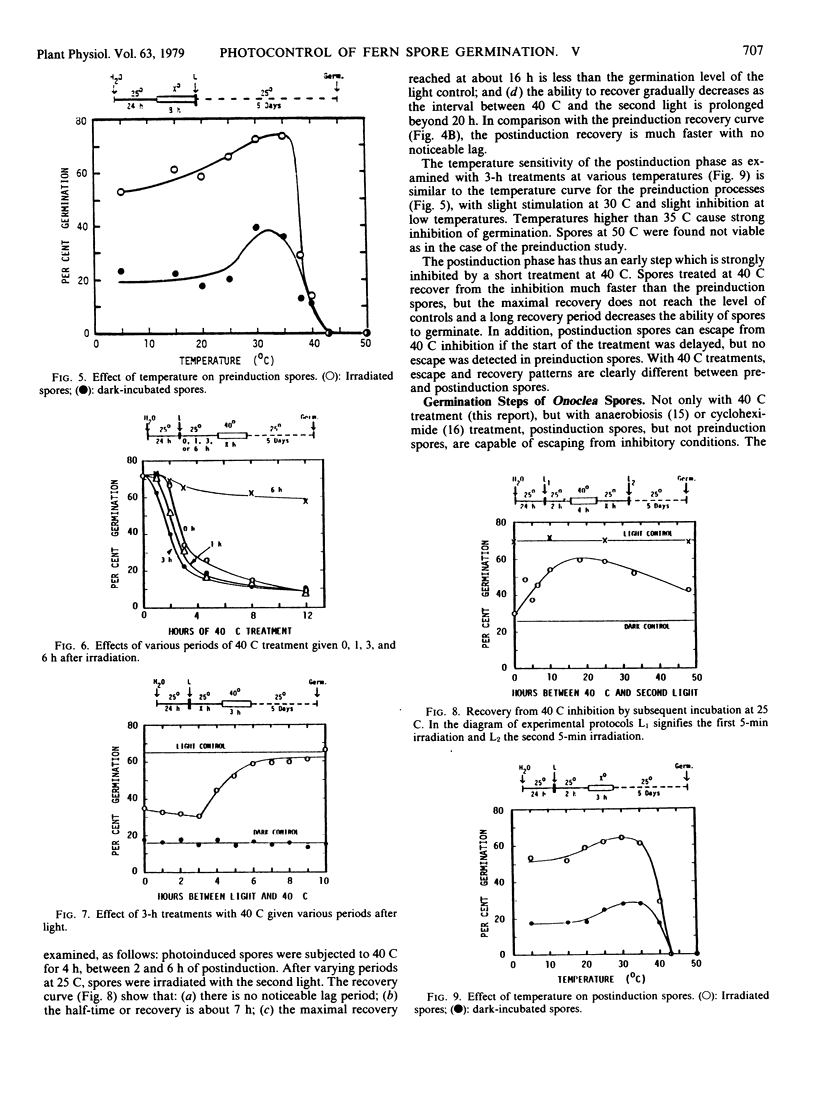
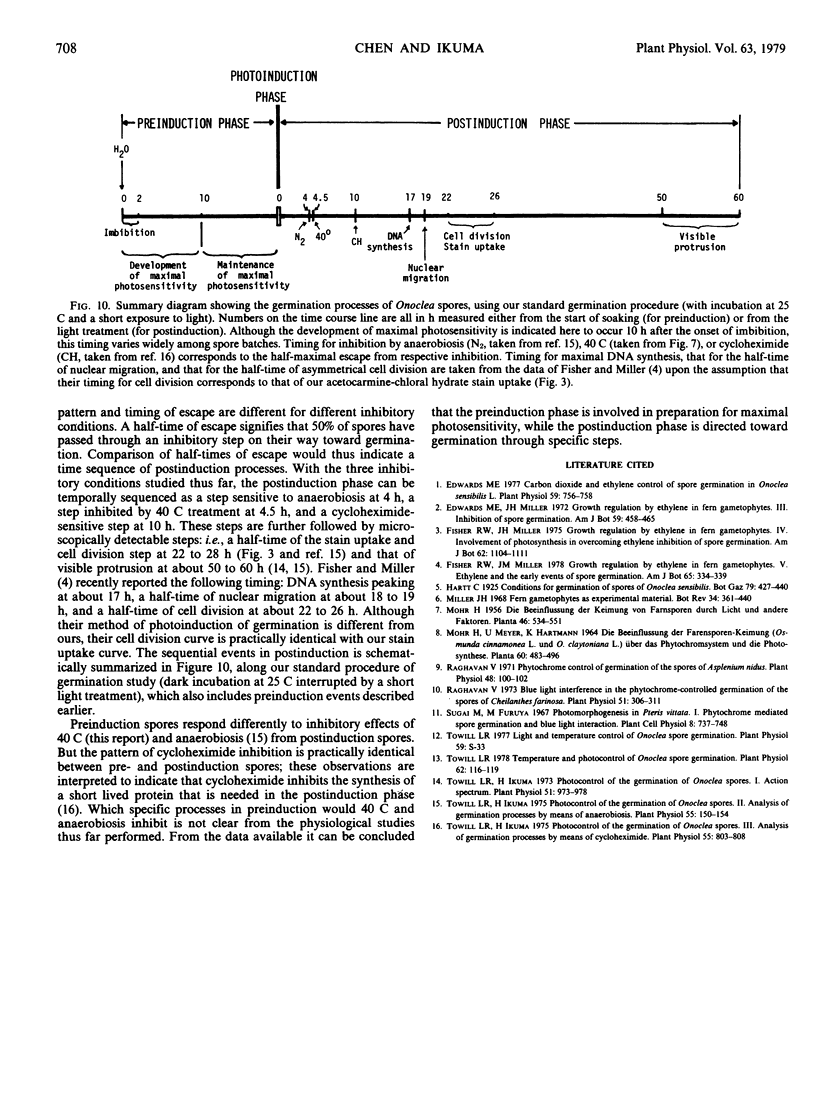
Selected References
These references are in PubMed. This may not be the complete list of references from this article.
- Edwards M. E. Carbon Dioxide and Ethylene Control of Spore Germination in Onoclea sensibilis L. Plant Physiol. 1977 Apr;59(4):756–758. doi: 10.1104/pp.59.4.756. [DOI] [PMC free article] [PubMed] [Google Scholar]
- Raghavan V. Blue Light Interference in the Phytochrome-controlled Germination of the Spores of Cheilanthes farinosa. Plant Physiol. 1973 Feb;51(2):306–311. doi: 10.1104/pp.51.2.306. [DOI] [PMC free article] [PubMed] [Google Scholar]
- Raghavan V. Phytochrome Control of Germination of the Spores of Asplenium nidus. Plant Physiol. 1971 Jul;48(1):100–102. doi: 10.1104/pp.48.1.100. [DOI] [PMC free article] [PubMed] [Google Scholar]
- Towill L. R., Ikuma H. Photocontrol of the Germination of Onoclea Spores: II. Analysis of Germination Processes by Means of Anaerobiosis. Plant Physiol. 1975 Feb;55(2):150–154. doi: 10.1104/pp.55.2.150. [DOI] [PMC free article] [PubMed] [Google Scholar]
- Towill L. R., Ikuma H. Photocontrol of the Germination of Onoclea Spores: III. Analysis of Germination Processes by Means of Cycloheximide. Plant Physiol. 1975 May;55(5):803–808. doi: 10.1104/pp.55.5.803. [DOI] [PMC free article] [PubMed] [Google Scholar]
- Towill L. R., Ikuma H. Photocontrol of the germination of onoclea spores: I. Action spectrum. Plant Physiol. 1973 May;51(5):973–978. doi: 10.1104/pp.51.5.973. [DOI] [PMC free article] [PubMed] [Google Scholar]
- Towill L. R. Temperature and photocontrol of onoclea spore germination. Plant Physiol. 1978 Jul;62(1):116–119. doi: 10.1104/pp.62.1.116. [DOI] [PMC free article] [PubMed] [Google Scholar]


